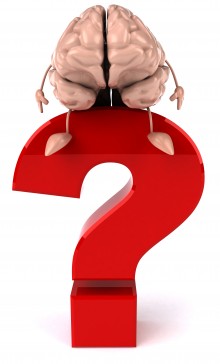For Clinicians Who Already Use Neurofeedback
Have you taken courses or been to conferences on neurofeedback? Have you been doing neurofeedback for a while? You may be itching to increase your neurofeedback skills, or to add other instruments or equipment.
 We always recommend learning one thing well before you add anything to it. Looking across many clinicians’ experiences, it seems that trying to learn multiple systems, models, approaches, and tools at the same time actually slows down your start-up. It’s probably like trying to learn several different kinds of therapy at once. It’s better to learn one well, then add to it.
We always recommend learning one thing well before you add anything to it. Looking across many clinicians’ experiences, it seems that trying to learn multiple systems, models, approaches, and tools at the same time actually slows down your start-up. It’s probably like trying to learn several different kinds of therapy at once. It’s better to learn one well, then add to it.
Sometimes clinicians look for other tools because they’re not getting consistent results. Before you buy something else, consider if you are making appropriate progress with clients now. Are you getting the kind of results you should expect with neurofeedback? If you’re not sure and would like help, you can consult with other clinicians.
Increasing protocol skills is an important option. No matter what you know, there are always new site and frequency options you haven’t tried. Even if you’re using qEEG’s, they don’t tell you all the training options. A limited number of courses teach advanced protocol options, though you can pick up a lot of hints at some of the conferences. Sometimes, a good mentor is enough, because you can just learn their protocol approach.
EEG Neurofeedback Options vs. Other Options
Since this section is for clinicians who already do neurofeedback, we assume you already have a neurofeedback system. Is it useful to consider adding another EEG neurofeedback device versus adding other tools? It might be. There are some who think if you’re already making reasonable progress with your neurofeedback, don’t add another EEG device. Add other tools that are complementary to EEG neurofeedback and are different than another neurofeedback system. There are pros and cons to this view. It depends on which system you start with, what results you’re getting, what you are trying to achieve by adding a new system, etc.
There are many instrument options: EEG Spectrums’s EEGer software, Thought Technology’s Infinity, J&J, Deymed from The Czech Republic, NeurOptimal, Neuropathways, and Brainmaster. They all have their pros and cons. It’s very difficult to simply create a list and try to check off features. It’s more involved than that.
Your goal is improved outcomes for clients. Even clinicians who use one system have a hard time comparing their outcomes with others who use another system. Some have better amplifiers, some have better software, some show you more EEG, some are cheaper, some have certain games, and some focus on using different training parameters than others. Does buying an FDA-registered device matter? If you want to try to compare them and assess which is best, it can be challenging.
 You need to consider if there is a new learning curve, or if you can you pick it up quickly? Are you going to choose the same or a different training model than you currently use? Will the same expertise be needed for each system? Are you going to need additional training for a new system? Are you going to need extra training or supervision for a new training model? Are you going to use qEEG’s? Will you use a service or do the analysis yourself? Who are you going to use for mentoring? Does it matter what database you use for qEEG’s?
You need to consider if there is a new learning curve, or if you can you pick it up quickly? Are you going to choose the same or a different training model than you currently use? Will the same expertise be needed for each system? Are you going to need additional training for a new system? Are you going to need extra training or supervision for a new training model? Are you going to use qEEG’s? Will you use a service or do the analysis yourself? Who are you going to use for mentoring? Does it matter what database you use for qEEG’s?
Will you support home use? What are the pros and cons of that? Are units geared towards home use really a better option than conventional neurofeedback for the home? What limitations do they have in a clinical environment?
These are all issues to decide and assess. We’ve known many clinicians who spend a great deal of time and money just trying to figure out what to use. They go to conferences, trainings, and talk with other clinicians to help make sense of all the options before purchasing new equipment.
Other Tools
If you’re ready to add something, there are a lot of options. That being said, when you have tough clients and aren’t sure what to do, you may want other equipment. Or you just may want to use other tools to try to speed up the process with your clients. Or you like new toys.
There are a whole host of other devices that are in the neuro-regulation arena, but are not EEG biofeedback devices specifically. They include Audio Visual Stimulation, Alpha-Stim, HEG (both PIR- passive infra red and NIR – near infrared, two different pieces of equipment), the LENS machine, pRoshi, Interactive Metronome, an Integrative Motion chair, a CO2 monitor for breathing/HRV regulation, Heart Rate Variability, and more.
You may run into experienced clinicians who have a number of tools, systems, etc. They’ll tell you how important they all are. But they grew into them; they didn’t start out with them. We have a bias toward being practical. We haven’t seen many practices with major growth using lots of different tools. That doesn’t mean the tools aren’t helpful, but do they all gain you a more successful practice? It’s not so clear.
We’ve created a list of tools that are used by clinicians. There are more, but this is a good start. Each has its proponents, and new technology comes out all the time. You can research them and figure out what works, and which are good fits for your practice. Trying to make sense from this list is challenging. Talking to other clinicians is useful, but many times they aren’t familiar with all the options. It’s important to understand your practice, your target patients, and your style before deciding on equipment, software, and tools.

